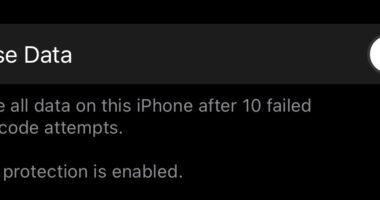This seven-step guide will show you how to work as a freelance proofreader online and will give you some useful advice on how to do it well. It also lists the best places to find proofreading jobs and outlines the tools of the trade you’ll need to learn.
The Basics Of Proofreading
No matter the subject matter or genre, proofreading is crucial to producing high-quality writing. A piece of writing with typographical errors won’t hold the reader’s attention very long.
What Proofreaders Do
A proofreader reads a piece of writing to check for spelling, grammar, and typographical errors. Copyediting and proofreading are not the same, although some people believe they are the same. A copyeditor makes changes to the text that make it more accurate and readable, ensuring that all of the information is factual and that the writing is appealing to readers.
Conversely, a proofreader’s primary job is to make sure there are no errors on the page (like misspelled words, extra spaces or incorrect apostrophes).
A common career path for proofreaders in a corporate setting is to use their experience gained in proofreading to become a copy editor.
When working for smaller companies, especially as a freelancer, some clients will count on you to handle some copy editing work as well because they are unwilling to hire both a proofreader and a copyeditor. Therefore, be sure to fully understand what each client wants.
Types Of Proofreading Jobs
- Books and e-books: With the advent of self-publishing, anyone can write and publish a book. These people don’t have a publishing house that provides proofreading services, so they look to freelancing proofreaders to do the job for them.
- Blog posts: There are millions of blogs and tens of millions of blog posts. Many content creators are single-person operations, where the bloggers already wear a lot of hats. Hiring a proofreader allows them to wear one fewer.
- Marketing content: Even the smallest of small businesses produce marketing content, but they don’t have enough work to have a full-time proofreader on staff. So small businesses are a good target for part-time proofreading freelancers.
- Technical content: This is where choosing a niche comes in. Technical content is not a good place for general proofreading, but it is a good place for someone who specializes in a particular topic.
- Academic papers: College students are a great source of work for proofreaders. Graduate students often hire freelancers to help them ensure their dissertations are error-free.
Proofreading Skills You Need
A good proofreader has an eye for small mistakes that most people would pass over, plus a complete grasp of the English language (including spelling, grammar and punctuation).
There are proofreading software programs out there, but none of them can catch everything because the English language and the various rules and standards around it are so numerous and complex.
Proofreading is one field where humans will never be replaced entirely by technology.
How Much You Can Make
As you start your career, you probably won’t make a lot. But as you gain experience, you can start charging more. On average, proofreaders earn around $25 per hour.

According to the Bureau of Labor and Statistics, the mean wage for proofreaders ranges from $10.91 to $29.56 per hour.
How To Become A Proofreader – A Seven-Step Guide
Becoming a proofreader is easier than you might think. In fact, if you’re motivated, it’s possible to read this guide today and have your first client on contract by the same time tomorrow.
Here’s a step-by-step guide to help you make that a reality.
Step #1: Identify Your Strengths And Selling Points
While you don’t need years of experience to become a freelance proofreader, a lack of references, testimonials and feedback means that you will need to convince potential clients that you’re up for the job.
So it’s important to begin this process by thinking about what you have in your background that can help build that confidence. Maybe you have an English degree, edited corporate documents in your day job, or served as the editor for your high school or college newspaper or yearbook. All of these are perfectly sufficient for getting entry-level work.
Think about it like this…
If you’ve spent your career working as a nurse or a salesman, your general professional experience is irrelevant to potential clients. The fact that you were a motivated, dependable employee doesn’t say anything about your ability to spot and fix misplaced commas.
So in cases like this, you need to drill down a little deeper. For example, if you’ve worked as a nurse, you could explain how part of your job included carefully reviewing and correcting medical notes and transcripts, where any errors could have catastrophic effects on patients.
If you’ve worked in sales, you could explain that you were responsible for reviewing all of your company’s marketing materials prior to publication.
Do these examples seem like a stretch? Maybe, but keep in mind that you only need to sell yourself this way to your first couple of clients. Once you have a couple of projects under your belt, you will be a proofreader — and your previous work won’t even matter.
Key Takeaway: Link your background to your ability to be an effective proofreader — even if that requires thinking creatively about your skills and experience.
Step #2: Build A Compelling Online Profile
Clients want to work with real people whose real names they know, and who have active online profiles. That means they’re going to Google you and base their hiring decisions, at least in part, on what they find.
So at the base level, just give up on the idea that you can do this work anonymously. If you don’t use your real name and photo, it will be much harder to get clients and you’ll earn less money.
More specifically, it’s crucial to make sure that all of your social media accounts send the signal that you’re a professional proofreader who can be trusted to deliver accurate results.
For most people, that means making changes to your online profiles (primarily LinkedIn) to highlight the strengths and selling points you identified in Step #1.
Key Takeaway: Use your social profiles to send the signal that you’re a professional proofreader who is actively engaged in the field.
Step #3: Get The Tools You Need For The Job
Like any profession, proofreading has tools of the trade that you’ll need to familiarize yourself with and have access to. The most important of these are style guides, which set specific rules for usage and punctuation within fields and industries.
For example, most newspapers adhere to Associated Press (AP) style, while most book publishers use the Chicago Manual of Style.
Why does this matter?
As a proofreader, your job is to obsess over details. And that means knowing things like whether “em dashes” (like the ones below) should have spaces around them.
- This is correct in AP style: The brown fox — who was very quick — jumped over the fence.
- This is correct in Chicago style: The brown fox—who was very quick—jumped over the fence.
Now, if you’re like most new proofreaders, you probably just said to yourself something along the lines of, “Oh my God, I’ve never considered something like that before, so maybe this isn’t for me.”
Take a deep breath! You don’t need to memorize the style guides (at least not when you’re first starting out). You just need to understand the kinds of things to look up.
However, that’s why it’s a good idea to invest in the style guides (which are relatively cheap) early on in your proofreading journey. (You can also find the answers to many common questions — but not all of them — online.)
These are the most common style guides:
- American Psychological Association (APA): Used in the social sciences (and some hard sciences).
- Associated Press (AP): Used in journalism.
- Chicago Manual of Style: Used in the U.S. publishing industry.
- Council of Science Editors: Used in biology and natural sciences.
- Modern Language Association (MLA): Used in the humanities.
Key Takeaway: You’ll deliver better work (and get better feedback) if you have access to the appropriate style guides.
Step #4: Brush Up On The Basics Of The Trade
While there’s no need to commit each style guide to memory, you do need to be familiar with the basics of each and stay current on the latest updates.
Some of the most common errors you’ll revise as a proofreader are things like serial commas, the number of spaces after periods, basic formatting and the hyphenation of compound words. These corrections vary slightly depending on the client’s preferred style guide, and the rules can change over time.
For example, AP style used to mandate the use of “percent” instead of the symbol. But recently, the rules changed to mandate the use of “%” instead of the word.
Many clients won’t follow or have a preferred style guide, so they’ll defer to you. You should get to know each well enough to decide which you prefer to work in.
Remember, it’s not just about your current client’s satisfaction; future clients may ask for samples of your work, and while the blogger who gave you your first proofreading job might not care if every detail adheres to a particular style guide, better-paying clients absolutely will — and your samples need to show that you know what you’re doing.
Key Takeaway: Follow the major style guides on Twitter and Facebook, and pay attention to announcements and changes.
Step #5: Identify Niches Where You Have A Competitive Advantage
In Step #1, we talked about identifying the parts of your background that will make you attractive as a proofreader — the skills and experience that show clients you can be trusted to correct their grammar and punctuation.
But when it comes to finding actual proofreading jobs, you want to circle back to your prior work history.
Because while your experience as a nurse is irrelevant when it comes to your proofreading ability, it makes you dramatically more attractive to clients who have health and wellness content that needs to be checked.
Everything that’s published exists within a niche, and chances are you have expertise in one or more of them. So the key is to think about where you can add value compared to other proofreaders, and then align your job search accordingly.
If you have a nursing background but spend time targeting proofreading jobs in the personal finance niche, you will:
- Have a harder time getting hired.
- Command a lower rate.
- Work slower, further reducing your rate on a per-hour basis.
There’s demand for proofreaders in virtually every niche imaginable, so don’t worry if you think you don’t have marketable expertise.
Key Takeaway: Targeting niches where you have domain expertise can help you overcome a lack of proofreading experience.
Step #6: Target The Right Kind Of Clients
When you’re new to the proofreading business, the feedback clients provide and post on your profile is absolutely critical for getting future work. If your first project garners a poor review, your proofreading career can be over before it begins.
This is especially true on job boards like Upwork and Fiverr, where feedback is everything.
Fiverr and Upwork are two of the largest marketplaces for freelance proofreading jobs. Get a sense of which platform is right for you in our guide to Fiverr vs. Upwork.
That’s why it’s important to be choosy about your clients.
I don’t have to tell you this, but not everyone is reasonable. Clients don’t always provide clear instructions, set clear expectations, or evaluate your work fairly.
And often, clients don’t understand how online feedback systems work, perhaps thinking that a 4.5/5 rating is “great” without realizing that a freelancer can get kicked off a platform for falling below a 4.8 average.
Once you’ve had 50 clients, a few bad reviews will amount to a drop in the bucket. But your first two or three are the only things people will see — so they have to be good.
Before accepting a project, look at the feedback the client has left for others. Are they overly critical? Do they leave nasty reviews?
And look for feedback on the client from other freelancers. Does the client fail to clearly communicate what they want? Are they difficult to get in touch with?
There are plenty of jobs available, so don’t let your eagerness lead you into a situation that will hurt your future prospects.
Key Takeaway: A negative review on your first project can derail your proofreading career, so be selective about who you work with when you’re just starting out.
Step #7: Deliver Perfection On Your First Project
As discussed above, your ability to make money as a proofreader is largely dependent on the success of your first project. That first client can leave you glowing feedback and refer you to others, or they can be brutally honest about the flaws in the work you deliver.
Everyone makes mistakes in their job — even when their job is catching mistakes! But your first project has to be absolutely perfect. Read it 10 times before submitting it to the client. Do whatever it takes to make sure there is nothing that can be criticized.
Key Takeaway: You don’t have to be perfect forever. But you do have to be perfect on this project.
Five Tips For Becoming A Better Proofreader
Like any online job, there are some tricks of the trade that will help you improve your proofing skills and land more work.
Tip #1. Do Your Final Read With Pen And Paper
The vast majority of your proofing will be done on a computer, and you should do multiple read-throughs of every project.
But the final read should be done the old-fashioned way. Print out every word of your project on paper and proof it with a red pen.
Our brains process language slightly differently when it’s on a page, so this method will help you catch mistakes that you missed on screen.
Tip #2. Do Your First And Last Reads On Different Days
Even if a project is fairly small and straightforward, and you can turn it around in a single day, always stretch it to at least two days.
When you read something twice in a row, your brain will start anticipating the next words and that anticipation can cause you to gloss over mistakes. To avoid this, do your first and last read on two different days.
Tip #3. Read The Text Out Loud
The final read of the project should be from the printed copy and done out loud.
You might feel a bit silly at first, but reading the text out loud uses a slightly different part of your brain than reading silently, which means you’ll catch mistakes the “silent reading” part of your brain skipped over.
Tip #4. Work From The Bottom Up
The first read of a project should be in the order the text was written. While part of your job is to catch things like grammatical errors and spelling errors, part of it is perfunctory copyediting — making sure that what you’re reading makes sense.
But one of your reads should be from the bottom up, starting with the beginning of the last paragraph and moving in reverse order. When you read sequentially, you can become absorbed in the content and the mistakes you’re looking for can become less obvious.
Tip #5. Limit Your Number Of Words Per Day
Being a proofreader isn’t physically demanding, but it is mentally demanding. If you try to do too much in a single sitting or in one day, your accuracy will decline as your brain becomes fatigued.
Monitor yourself closely until you can pinpoint at how many words your accuracy starts to falter, and make that number your cut-off point for that sitting or that day.
The Tools Of The Trade
Every good proofreader has a tool bag that should include the following items, most of which are free or relatively inexpensive.
As you peruse this list, you may think you already know how to use each of these — but you should still take a few minutes to research their features in detail, as many have hidden capabilities that aren’t utilized by the everyday user.
Google Docs
Many clients prefer to work in Google Docs because it’s free, user-friendly, and has a lot of tools that are helpful when two or more people are working on a project together — such as the ability to highlight and comment on a specific segment of text.
Microsoft Word also has these features, but they’re a little bit more complicated to leverage.
Microsoft Word
There are still a few holdouts who use Microsoft Word rather than Google Docs. Word is more complicated, but has a fuller set of proofing features, such as Track Changes — an editing option that allows you to keep track of revisions made to the original document.
Before starting as a proofreader, make sure you’re familiar with all of the features under the “Review” tab in Word — they’re not all self-explanatory, and you may need to refer to help articles to get to know how they work.
Grammarly Premium
Grammarly Premium is an online app, available by monthly or annual subscription, that automatically scans documents for the kinds of mistakes a proofreader is looking for.
It really is indispensable for this kind of work and worth every penny. Like any similar program, it isn’t foolproof and has its annoying quirks — but it’s one more way to do a quick scan for any errors you missed.
Hemmingway App
The power of Hemingway’s writing was his ability to write short, concise sentences that packed a punch.
The Hemingway App works on that principle. It can help you shorten unnecessary passages and revise language that makes a text unnecessarily difficult to read. While the app is more of a copyediting app than a proofreading one, it will be useful if you have clients that expect you to do some copyediting as well.
Where To Find Proofreading Jobs
While we keep a complete database of online proofreading jobs, here’s a shorter list to help you get started.
#1. Upwork
Upwork is the biggest freelancing site out there. It has posts for thousands of jobs, including plenty of proofreading jobs. That does mean you face a lot of competition though, so remember to choose a niche and bid low if you don’t have much experience.
You can see feedback on the clients, as well as feedback they have left, so you can get a sense of how good or bad a client will be to work with.
#2. Fiverr
On Fiverr, the clients come to you. You create a profile and post an offer (called a “gig”) along the lines of, “I will proofread 500 words for $25.” Then, clients simply “purchase” the gig and send you their work.
You may be able to get work faster on Fiverr than Upwork, but you can’t choose the clients — which means you may have to deal with some difficult people. Additionally, the pay for projects on Fiverr is typically a bit less than on Upwork.
#3. FlexJobs
If you’re looking to make proofreading a full-time career rather than a side hustle, FlexJobs can be a good option. Each of the postings has been vetted, so you don’t need to worry about being scammed, and many posts tend to be long-term projects or jobs with established corporations that can be done remotely.
#4. Content Agencies
Content agencies hire for all manner of jobs, including proofreading, editing and writing. An agency does the legwork for clients who need people to fill these positions, typically on a project-by-project basis. Some agencies that hire include Proofreading Pal, Proofreading Services, and Scribendi.
Frequently Asked Questions About Proofreading
The reason for that is simple: there’s a limit to how much value even the best proofreader in the world can bring to the table. At some point, the text is perfect, and no matter how skilled you are, you’re not going to make it any better.
If you want a freelance opportunity with more upside, pair your proofreading with writing and editing — two fields in which the amount of value you can add is much higher.
How To Become A Proofreader: Summary & Final Thoughts
Proofreading is a great field to get into if you have the skills because it’s so flexible. You can do it part-time or full-time, and it’s one of the best overall ways to make money from home.
There’s a lot of work available, which means you can start your own business as a proofreader. Plus, the bar for entry is low, as you don’t need a college degree or years of experience to start landing clients.
If you’re good, you can build long-term relationships with clients because most people who need a proofreader will have ongoing work.
And on top of all this, it pays relatively well.
If all of that sounds appealing to you, proofreading might be the ideal career.
READ NEXT: 10 Greatest Athletes of All Time











